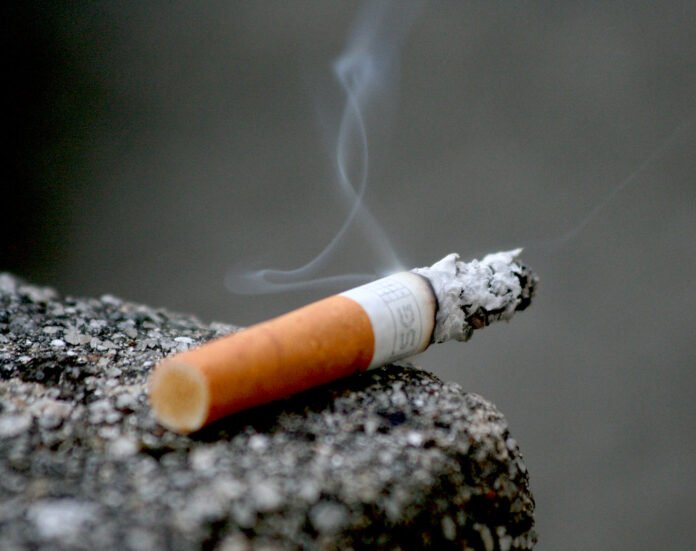Tjuntjuntjara, one of Australia’s most remote communities in the Great Victoria Desert, is facing an urgent health and social crisis as smoking rates soar and cigarette costs spiral out of reach for many residents. Locals, including health practitioners and community leaders, are calling for greater government support to help residents quit smoking and address the growing strain on health and finances.
Despite national efforts to reduce smoking, the situation in Tjuntjuntjara remains stark. While about 8.8 per cent of Australian adults smoke daily, that figure rises dramatically to 46 per cent in remote First Nations communities — and in Tjuntjuntjara, community leaders believe the rate is even higher, with estimates suggesting over 70 per cent of adults are daily smokers.
The High Cost of Smoking in Tjuntjuntjara
Michael Stevens, a health practitioner who has served Tjuntjuntjara for a decade, said the extraordinary cost of smoking helped him quit. “I used to smoke, but not anymore,” Stevens said. “I don’t know why people smoke.”
Stevens’ story reflects a broader reality. According to community chief executive Jon Lark, cigarette prices in Tjuntjuntjara are exorbitant, partly due to federal taxes and the significant freight costs to this remote area. A 30-gram pouch of tobacco sells for $114, and a packet of 20 cigarettes costs $56 — more than 45 per cent higher than prices in major supermarkets.
This cost burden leads to significant financial strain. “People spend nine times the amount on tobacco and cigarettes than they do on fresh fruit and vegetables,” Lark explained.
READ MORE: EV Charger Supplier Pulls Out of Yeppoon Project Amid Council U-Turn
The heavy financial toll also feeds into social problems, as observed by Spinifex woman Donna Marie Brown. She notes that younger residents often “humbug” elders for money to buy cigarettes, and some people sacrifice proper meals to afford tobacco products. “They just buy a pie or cool drink,” Brown said. “That’s not going to last them a few weeks.”
Smoking’s Deadly Toll on First Nations Communities
Beyond the financial impact, the health consequences are devastating. Smoking is responsible for 37 per cent of all First Nations deaths nationwide and half of deaths among Indigenous Australians aged 45 years and over, according to federal government data.
Stephen Farrington, a remote area nurse practitioner with the Spinifex Health Service, says that while nicotine patches and gum are available at the local clinic, overcoming addiction is extremely difficult. “It’s so social that someone will come and offer them a cigarette and they go, ‘Oh, it’s only one.’ And then they’re back onto it again,” Farrington said.
He highlighted that some residents are spending close to a third of their income on cigarettes, exacerbating financial hardship in a community already grappling with poverty and limited access to services.
Mental Health Gaps Worsen the Challenge
Farrington also pointed to a glaring lack of mental health support as a barrier to reducing smoking rates. “We’ve got no visiting psychiatrist to make [a] diagnosis,” he said. “We’ve got no visiting mental health nurses to support us with our day-to-day maintenance of these people. We basically fly alone.”
The WA Department of Health noted that WA Quitline offers culturally safe Aboriginal counselling support, but on-the-ground mental health services remain critically absent.
Gaps in National Anti-Smoking Programs
The federal government funds the Tackling Indigenous Smoking (TIS) program, which aims to reduce smoking and vaping among First Nations people through culturally tailored activities. However, locals say they have seen little evidence of its delivery in Tjuntjuntjara.
While the Kalgoorlie-based Bega Garnbirringu Health Service received $1.7 million to deliver the TIS program in WA’s Goldfields region, community leaders such as Lark argue that no meaningful action has reached their town.
“We’re so far behind in trying to catch up with the rest of Australia,” Lark said. “It’s time that we were properly supported.”
A Complex Relationship with Tobacco Taxes
While high cigarette prices, driven largely by federal excise taxes, are intended to discourage smoking and fund healthcare, they also bring unintended consequences. The cost pressures in communities like Tjuntjuntjara can exacerbate hardship and drive residents toward unhealthy coping mechanisms.
Meanwhile, the government faces challenges from a booming black-market cigarette trade, which has slashed expected tobacco tax revenues by nearly $7 billion. Nonetheless, officials maintain that funding for quit programs is not directly tied to tobacco excise collections.
Calls for Greater Action and Support
With the latest federal budget committing $141.2 million to expand the Tackling Indigenous Smoking program and $29.5 million to quit support initiatives, there is hope that more effective support will eventually reach remote areas like Tjuntjuntjara. However, residents and health workers stress that urgent action is needed now.
The Coalition has also promised to focus on Indigenous health if elected, proposing $500 million in mental health support and plans to double the number of government-subsidised mental health sessions from 10 to 20 per year.
Local Determination and Hopes for Change
Despite the bleak statistics, there is a strong desire among Tjuntjuntjara residents to quit smoking and improve community health. Stevens, who managed to quit despite the challenges, believes that change is possible — if people receive the right support.
“[There were] too much people asking [for smokes],” Stevens said, smiling from his ambulance driver’s seat. “And it cost too much money.”
Tjuntjuntjara’s story is a stark reminder that while national trends show smoking rates falling, the battle is far from over in remote First Nations communities. Without urgent, culturally appropriate, and sustained interventions, communities like Tjuntjuntjara risk being left behind — paying not just in dollars, but in lives.
